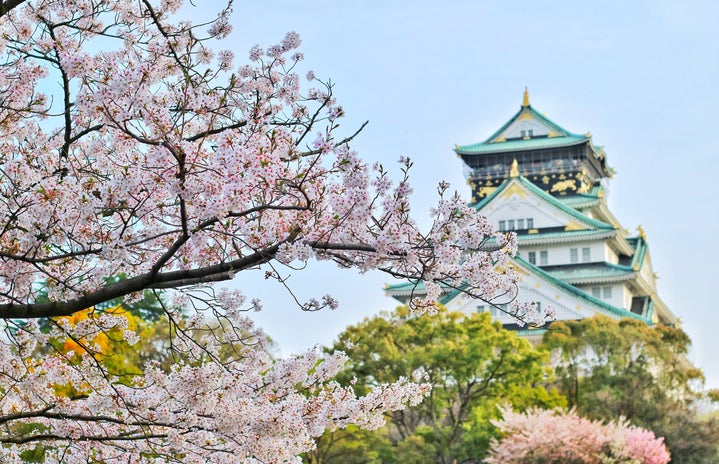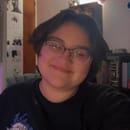When we think of mythology, our minds will most likely drift to Greek and Romanー maybe Norse, if you like the MCU. However, the history of most (if not all) countries features mythology! According to the Merriam-Webster dictionary, mythology is “a body of myths such as the myths dealing with the gods, demigods, and legendary heroes of a particular people.” If you’re a person who likes anime or manga, you might probably know some of the most popular mythological creatures, and maybe even some urban legends. So, I’m here to give you a crash course on Japanese Mythology so you can add one more to your list of the ones you know!
Japanese mythology is greatly inspired by Buddhism and Shintoism, and thus it is polytheistic; as in there is more than one god or deity, similarly to Greek mythology. Although the myths were passed down through oral tradition, eventually they were written down within the Nihon Shoki and the Kojiki. These books tell the creation story of the islands as well as more assorted myths of all the kami. Because of the Shinto inspiration, Japanese mythology is very animistic. This is the belief that places, objects, and creatures possess a distinct spiritual presence. Because of this reason, although the direct translation could be gods, translators urge people to use kami. The kami are not all gods, considering there’s kami for all sorts of things. Similar to most mythologies, Japan has its very own creation story of how the Japanese islands were created as well as a pantheon of the main or bigger kami.
The creation story of Japanese mythology can be divided into two parts, the Kuniumi and Kamiumi. The Kuniumi is the creation of the land, and the Kamiumi is the creation of the kami themselves. Before the creation of the world itself, the land was formless. After the three primal deities, Amenominakanushi, Takamimusubi, and Kamimusubi, came into being in Takamagahara, the High Plain of Heaven, came seven successive generations of deities. The last of these seven consisted of Izanagi and Izanami, to which the older generations assigned the task of bringing order to the formless world. With the jeweled spear, Ama no Nuboko, they decided to stir it in the formless mass that was the world and, upon lifting it, a drop fell from the tip and created the Onogoro island, where they made their home. They built a palace, the Eight Measure Palace, and in its center stood a pillar, the Heavenly August Pillar.
Once they were settled in, they decided to start a family and the ritual for creating offspring was circling the Heavenly August Pillar. Izanagi moved to the left and Izanami to the right, so they met each other as they came around. Upon meeting, Izanami exclaims, “What a fine young man!” and Izanagi exclaimed, “What a fine young woman!” in response. Izanagi complained afterwards that she should have let him have the initiative. Later on, Izanami gave birth to a son. However, the child came out without bones or limbs, so they placed him on a boat and abandoned him. They went to Heaven to ask their elders what they had done wrong, and they confirmed that Izanagi was correct in thinking that he should have had the initiative. According to the elders, their child was born misshapen because it was unnatural for the female partner to take the initiative. They returned and tried again, this time making sure that Izanagi greeted his wife first, and they were successful! Izanami gave birth to the islands of Awaji, Shikoku, Oki Kyushu, Tsushima, and lastly the largest one, Honshu. The land was given the name of Oyashimakumi, the Land of Eight Great Islands. Izanami also gave birth to all the smaller, surrounding islands after.
This marks the end of the Kuniumi and then begins the Kamiumi. With the land birthed, Izanami began birthing the kami that would give the land shape. And thus, the kami of the sea, wind, trees and mountains, and other natural phenomena were born. The last of these she directly birthed was Kagutsuchi, the kami of fire, which burned her to death; and from her death and body, more kami were born. Izanagi grieved, and from his tears more kami were born. In his rage, he cut off Kagutsuchi’s head and from his bloody sword, more kami were born. After grieving, Izanagi set off to Yomi, the Land of the Dead, in the hopes of getting Izanami back. After a long journey in Yomi, Izanagi found a great mansion within which Izanami had been. Izanagi pleaded with Izanami to come back, but she had eaten food. She decided to ask the resident kami of the Yomi for permission to leave. Izanami only asked her husband to not look for her inside the mansion and to wait for her to come back out. Izanagi waited for one day before he could wait no longer and went inside to search for Izanami. Inside, he found the rotted and decayed corpse of his wife. Overcome by disgust, he fled and was pursued by kami. He fought off his pursuers and managed to imprison Izanami within the House of the Dead by covering the entrance to Yomi with a boulder. From then on, Izanami became known as Yomotsu-o-kami, the Goddess of the Dead; and, after escaping, Izanagi’s purification from his journey in Yomi produced even more kami.
In a similar vein to Greek mythology, there is a pantheon of kami in Japanese mythology. Despite that they believe there to be infinite kami, there’s still the main pantheon of kami that represent big natural phenomena, such as the sun, the moon, good luck, and fortune.
Amaterasu is the Japanese sun goddess and daughter of Izanagi and Izanami; one of three kami born from Izanagi’s purification ritual after his journey in Yomi. It is said that the first Japanese emperor, and thus the Japanese nobility, was descended from her. She became the Queen of Heaven, kami, and goddess of creation, a title she inherited from her father, Izanagi, now that he defends the world from the land of the dead. She married her brother, Tsukuyomi, god of the moon, who was also born from Izanagi’s purification. The origins of night and day came from their separation, due to his violent nature and the killing of Uke Mochi, goddess of food. Amaterasu has a shrine dedicated to her and, being the goddess of the Sun and all that it brings, she’s still worshiped today. The Ise Grand Shrine, Jingū, in Ise, Mie Prefecture Japan, is dedicated to Amaterasu and the official shrine of the Imperial Family.
Other kami include Susanoo, god of the seas and storms, thunder and lighting, the third sibling born from Izanagi’s purification; Ame-no-Uzume, goddess of dawn and master of humor and dancing; Benzaiten, goddess of love and luck, very popular due to her involvement with luck and the importance of that in Japanese culture; Fujin, god of the wind, and his brother Raijin, god of thunder; among very many others.
No mythology crash course is complete without talking about a few mythological creatures! In Japanese mythology, mythological creatures are referred to as youkai. They might be evil, and they might be good; ultimately, their behavior depends on their mood and how you approach them. I’m discussing my two favorites, kitsune and kappa.
Kitsune are fox youkai. They have a variety of powers, including shapeshifting and high intelligence. Kitsune are said to become more powerful every year they are alive, and for every 100 years they live, they receive a tail; making nine-tailed foxes the most wise and powerful of all. Because they have a life-span of less than 1000 years, it is unlikely for kitsune to get more than nine tails. There are believed to be two kinds of kitsune, Zenko and Yako, literally good foxes and wild foxes. Zenko include benevolent kitsune with celestial powers and divine messengers of Inari, protector of rice fields, prosperity, and fertility. Yako, however, include foxes who shapeshift and prank humans or even reward them depending on what they did.
Considered Suijin, water god, Kappa are humanoid, reptilian, amphibian-like youkai that live in rivers. They have a bowl-like indentation on their head where they carry water, which if emptied out, weakens or might even kill them. They will all look unique, in the same way as humans do, and have different scale colors and textures and height. Kappa are not necessarily benevolent youkai, as they tend to lure travelers to their rivers as a prank, or to drown them. It is said their favorite food is cucumbers!
Japanese mythology is vast and deeply interesting. I encourage you to do more research as there are many other customs, myths, and youkai within this mythology. For now, I hope you enjoyed this crash course on Japanese Mythology today!


